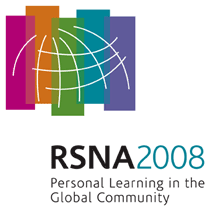
Abstract Archives of the RSNA, 2008
LL-GI4297-L01
Role of Doppler Sonography in Predicting the Risk of Esophageal Variceal Bleeding in Cirrhosis
Scientific Posters
Presented on December 3, 2008
Presented as part of LL-GI-L: Gastrointestinal
Muddassir Rashid MBBS, Presenter: Nothing to Disclose
Ibne Ahmad MBBS, MD, Abstract Co-Author: Nothing to Disclose
To determine the role of Doppler sonography as a non-invasive method for predicting the risk of esophageal variceal bleeding on the basis of suggested hemodynamic parameters.
The prospective study was carried out on 154 cases of cirrhosis who had no previous history of any variceal bleeding. During followup of 30 months 31(19.8%) patients developed at least one episode of variceal hemorrhage. The study was done using a LOGIC-500 (GE Wipro) ultrasound machine. Portal vein and the left gastric vein were evaluated, which included the assessment of vessel diameter as well as the direction and velocity of blood flow. Statistical analysis was done using t- test and z- test, with P-values less than 0.05 considered statistically significant.
Our study included 154 patients (125M:29F) of cirrhosis of age-groups 12-78 years of which 31 patients developed atleast one episode of variceal hemorrhage during follow up. Assessment of main portal vein revealed no statistically significant difference in portal vein diameter and direction of flow in portal vein between patients with or without esophageal variceal bleeding (EVB). However the mean portal blood flow velocity in EVB(+) group (9.82±2.04 cm/sec) was significantly lower than that in EVB(-) group (12.74 ± 4.21 cm/sec), (p<0.001).
Dilated Left gastric vein (LGV) (>6mm) was seen in 35 patients of which 10 patients(28.57%) had EVB while 21 out of 121 patients (17.36%) without dialted LGV also had EBV, with no statistically significant difference between the two groups. The flow within the coronary vein followed hepatofugal pattern in 75 patients (48.07 %) and EVB was seen in 40 % of these patients while only 6.25 % patients with hepatopetal flow experienced variceal hemorrhage(p<0.01). The mean flow velocity in LGV, was siginificantly higher in EBV(-) group (13.74 ± 1.21 cm/s), compared to EBV(+) group (16.8 ± 2.04 cm/s )(P<0.05).
Doppler sonography is a non-invasive and feasible technique which provides important information regarding the hemodynamic changes in the hepatic vasculature and can be effectively used to access the risk of variceal bleeding in the patients of cirrhosis.
PV and LGV evaluation can help in identification of patients at risk, hemodynamic measurements of LGV being superior to those of portal vein in predicting bleeding and optimizing therapy.
Rashid, M,
Ahmad, I,
Role of Doppler Sonography in Predicting the Risk of Esophageal Variceal Bleeding in Cirrhosis. Radiological Society of North America 2008 Scientific Assembly and Annual Meeting, February 18 - February 20, 2008 ,Chicago IL.
http://archive.rsna.org/2008/6007896.html

